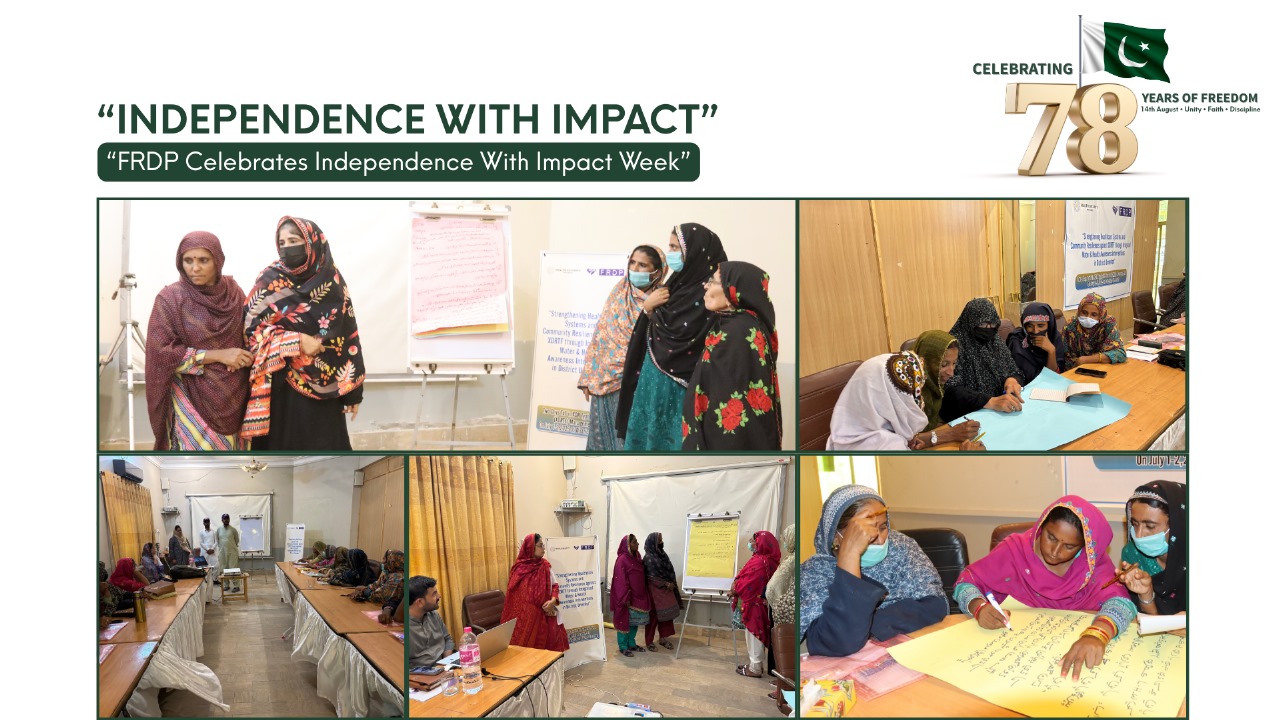Typhoid-An Invisible Threat: The Story of Strengthening Healthcare Systems and Community Resilience against XDR Typhoid Fever

There is a kind of danger that does not roar like a flood or scorch like a drought. It moves quietly, through the water you drink, the food you share, the hands you hold. In Umerkot, that danger has a name: Extensively Drug-Resistant Typhoid Fever. It is not new, yet its persistence has begun to change the rhythm of daily life. Where once people feared seasonal floods, now they fear what might be hiding in a glass of water.
The outbreak has left its own kind of silence. Not the hush of disaster’s aftermath, but the quiet of uncertainty. Households questioned the fate, the rarely looked at the safety of their wells. Mothers hesitated before letting children drink freely. Health facilities, already stretched thin, due to non-availability of essential services and struggled not just with treatment, but with medicines that no longer worked.
It was into this silence that the Fast Rural Development Program (FRDP) and Health Security Partners (HSP) as a part of CDC’s Global Antimicrobial Resistance Laboratory and Response Network stepped, not with promises of instant cures, but with a determination to build a different kind of resilience. On 14 April 2025, the project began its work, not with construction or distribution, but with groundwork mapping the problem, listening to the people, consulting with health professionals, and finding where change could take root.
Field teams visited health facilities identified through consultations, looking for places not only in need but ready to lead. Four were chosen: Rural Health Centre Janhero, Rural Health Centre Chore, and Rural Health Centre Nabisar Road, RHC Ghulam Nabi Shah. These were not random selections, but deliberate choices based on capacity, reach, and the trust they held within their communities. From Janhero’s 18 surrounding villages to Chore’s 25, and Nabisar’s daily OPDs of up to 500 patients, these centres were already lifelines. Now, they would also become guardians of safe water.
The plan was ambitious yet grounded install solar-powered drinking water schemes at each facility, extend safe water access to surrounding villages, and use every drop as an opportunity for awareness. In 20 deep-well villages, the project would bring water closer, ending the long walks to distant sources and replacing unsafe groundwater with clean, affordable supply.
But the work did not unfold in a straight line. Border tensions and a by-election in NA-213 Umerkot slowed approvals and paperwork. Security alerts disrupted transport routes. Key staff joined in staggered timelines, delaying some field verifications. And yet, progress continued not as a sprint, but as steady steps forward.
Awareness was as critical as infrastructure. Over 3,200 people, schoolchildren, women, and caregivers received IEC materials in local languages. Six target villages hosted awareness sessions that spoke not in medical jargon, but in the language of daily life how to keep water clean, why handwashing matters, and what signs of typhoid to never ignore.
The project also invested in those who stand on the frontlines of prevention, healthcare workers. In a two-days Training of Trainers at Umerkot, 20 master trainers from lady health workers to extension staff learned not only the science of XDR Typhoid, but the art of teaching it. Led by Dr Monika Maheshwari, the sessions covered everything from epidemiology and diagnosis to referral pathways and behaviour change communication. Each participant left with a localised rollout plan, ready to cascade knowledge into their communities.
The most powerful change, however, is harder to photograph. It is the mother who now insists her children wash their hands before every meal. In the RHC/BHUs nurse keeps a closer eye on early symptoms. In the village elder who speaks at community meetings about the importance of vaccination.
The project is still unfolding. Wells are being bored. Solar systems are being installed. Conversations about hygiene ripple further into the villages. XDR Typhoid has not been defeated; it is too tenacious for that, but the people of Umerkot from the project area are no longer unarmed.
This is not just a health project. It is a reminder that resilience is not built in hospitals alone, but in the spaces between in homes, in schools, in community gatherings, in the choices people make every day about water, hygiene, and care. And that once people hold both the tools and the knowledge, they begin to fight back not as patients, but as protectors of their own health.

